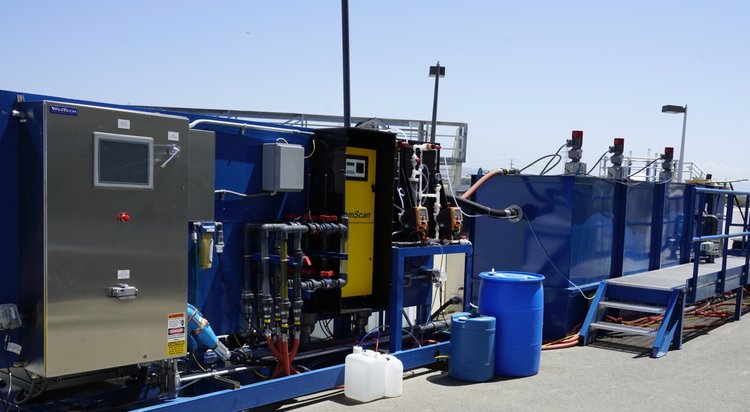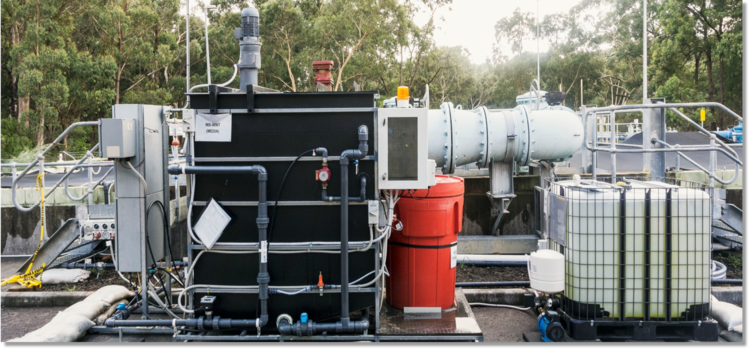A trial of Microvi’s MNE technology has been completed at Scottish Water
Published on by Trudi Schifter, CEO and Founder AquaSPE in Early Stage
A trial of Microvi’s MNE technology has been completed at Scottish Water’s Waste Water Development Centre at Bo’ness, by the Research and Innovation team.
Microvi, a green technology company based in California, in collaboration with Scottish Water carried out a six-month trial of the process at the centre near Falkirk. It is part of a range of next-generation bio-technologies the US firm has designed for the water, waste water and renewable chemical industries.
During the trial the plant treated primary settled effluent taken from the Bo’ness Waste Water Treatment Works primary tanks which are situated right next to the test centre.
The main objective of the trial was to establish if Microvi’s MNE technology can achieve treatment performance of total BOD (Biological Oxygen Demand) and TSS (total suspended solids) of minimum 20 mg/l and Ammonia of minimum 5 mgN/l, which is the typical effluent consent requirement.
It was also to test if the Microvi MNE can achieve much tighter standards and reduce the amount of ammonia in the final effluent – with a target of total BOD and TSS of 5 mg/l and Ammonia of 1 mgN/l. This is was an important element to the trial as wastewater sites face tightening consent requirements and finding out if this technology can achieve very low targets was one of aims of the project.
The technology uses specially selected, naturally occurring bacteria which consume pollutants in waste water. It creates an optimum environment for these bacteria – known as biocatalysts - to make them work more efficiently. It is designed to intensify the population of the bacteria and speed up the rate these good bacteria out-compete the bad bacteria.
The technology aims to drastically reduce the amount of sludge produced. This happens as a result of the biocatalyst creating an environment where bacteria reproduction is limited. Reducing sludge cuts the energy, transport and chemical requirements to manage bio-solids and in turn means far less space needed for the treatment process.
The results of the trial confirmed the Microvi MNE process can treat ammonia and soluble BOD to below levels of detection at high flow and high organic loading rates.
It confirmed Microvi's waste water technology has significant advantages over conventional water treatment processes. It requires a smaller footprint and does not generate biological solids, while removing BOD, ammonia, phosphorus and nitrate. The solution is easy to use and can be used in existing infrastructure.

Low-cost nitrification The Microvi MNE™ process demo for ammonia removal at Oro Loma Sanitary District (OLSD) in San Lorenzo, California.

Rapid denitrification The Microvi MNE™ process demo for tertiary denitrification at Sydney Water's Winmalee Wastewater Treatment Plant in Sydney, Australia.
Media
Taxonomy
- Wastewater Treatment
- Biochemistry
- Wastewater sludge Treatment
- Bio-Media